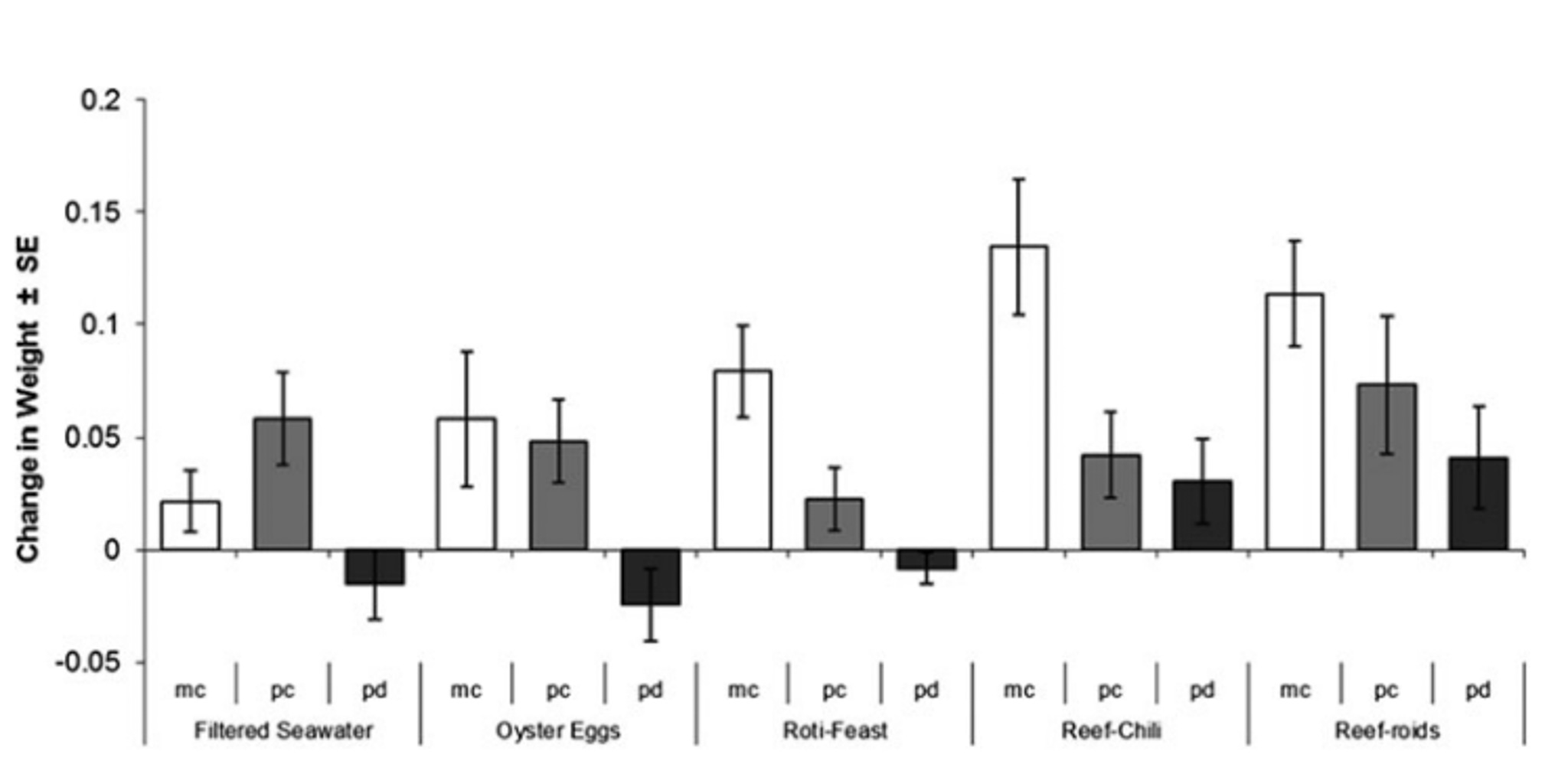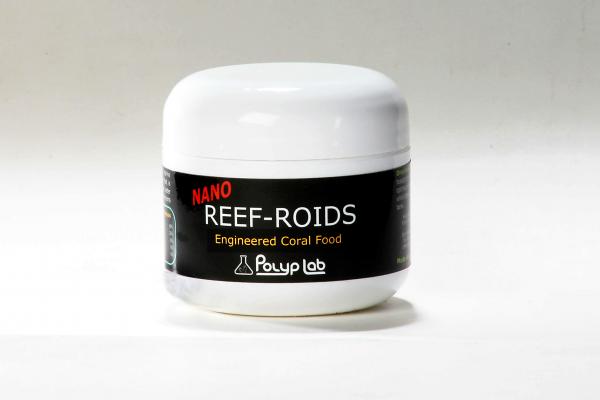The TLDR:
- Reef Roids led to the highest average increase of growth across three species.
- This study shows that different coral species prefer different food sources and environments (light + flow)
- The study also highlights that higher doses of some commercial suspension foods can inhibit coral growth.
- Reef Builders will be doing a similar test in the future while also tracking organic chemistry and the microbiology of the system over
A 2011 study by the University of Hawaii analyzed the effect of different commercial food sources on the growth rates of Montipora capitata, Porites Compressa, and Pocillopora Damicornis.
Four primary foods were tested Oyster eggs, Roti-Feast, Reef Chili, and Reef Roids. The addition of Reef-Chili led to more growth in Montipora capitata than Reef Roids but less growth in Porites compressa and Pocillopora damicornis. Thus, on average, Reef Roids led to the largest increase in growth across species.

While Reef Chili led to the largest increase in growth in Montipora, Reef Roids led to the largest increase in growth overall across all three species. Perhaps a combination of these products would be best.
This study also analyzed the addition of MicroVert, MarineSnow Plankton Diet, Phytoplan, and Salifert’s Coral Food. These suspension foods were applied at the manufacturer’s recommended dosages, and no effect on growth was observed. At dosages higher than the manufacturer’s recommended dosage (3x-10x), coral growth was inhibited (statistically in Montipora). Phytoplan and Salifert led to increased algae growth in the testing containers, and their addition resulted in the lowest growth across experimental additions.
The study also analyzed the effect of light and flow on these species. It found that Porites do best in “high light” with low flow (4 cm s-1) and with or without heterotrophic feeding. Monitpora grew faster at “lower light” levels, and both Montipora and Pocilopora benefited from feeding. The flow was constant and relatively unidirectional—a “high flow” of (11 cm s-1) led to less overall growth than a “low flow” of (4 cm s-1).
Our Thoughts:
The data from this study highlights that corals differ in nutritional requirements, prey size, etc., across species. Based on this data, feeding a wide variety of different micron foods may be the best option until more species—and food-specific data are available. The most interesting aspect of this study to me was the results of the second experiment with liquid foods. I suspect that overdosing on this food inhibited growth due to changes in the coral’s microbiome due to the localized increase in labile DOC.
I would have liked to see shifts in organic and inorganic nutrients correspond to the feeding data across a function of time. It’s important to note that the liquid foods were only dosed at night, and the flow-through systems were flushed with fresh water in the morning. This indicates to me that even a limited contact time with a high nutrient (organic or inorganic) could lead to negative downstream effects and a stifling of growth. It would be interesting to replicate this experiment in a non-flow-through system with a mixture of the available foods currently on the market, with a wider selection of coral species, and while measuring inorganic chemistry, organic chemistry, and the microbiome across the period of testing.
Once some other experiments are over, we could set this up at the Reef Builders Studio.
Read the study here:



